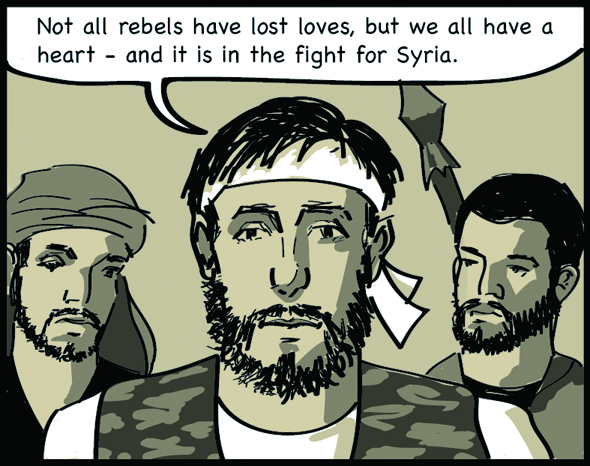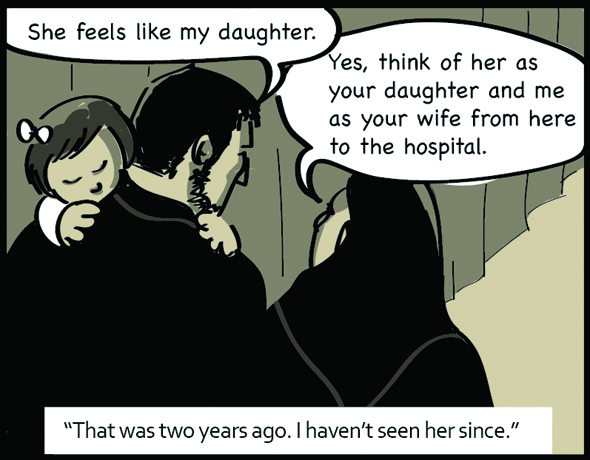In December 2012, Fotini Christia, a professor at MIT, was in Antakya, Turkey, researching an article about women in the Syrian revolution when she met Mohammed, a Free Syrian Army fighter who was visiting comrades in the hospital. (It is difficult to treat injured fighters in combat, and the worst wounded are often taken across the border to Turkey.) Mohammed was from Idlib–the same province Christia had been reporting in recently–and spoke to her eloquently about his life and experiences, and his hopes for a free Syria.
She ended up with three hours of material that didn’t fit into her Foreign Affairs article. Looking for the best way to present Mohammed’s story, Christia decided to turn it into a piece of op-art, with the help of artist Thalia Chantziara. The piece appeared on Al Jazeera America’s website.

FC: We were meeting at a restaurant in Antakya and people were totally glaring at us because I had my head covered, and he had a long beard and looked like he was religious. Antakya is quite a modern place. There were people who complained to the manager about us being in the restaurant and they refused to sit at the tables next to us.
Although Christia’s story focused on women, she wanted to speak to the men who were fighting, too.

FC: It’s not like Syrian fighters were sitting around Turkey, or wanting to talk, necessarily. There were a lot of people who were entering through Reyhanli, which is the border city, but these were not Syrians, they were foreign fighters. So these were not people I was keen to talk to, nor would they necessarily want to talk to me, to be frank. I wanted to talk to Syrians who had been in [the war].
There is so much coming out of Syria about the jihadi groups that are there as well, which is undoubtedly true, so I wanted to make sure that the story about the actual Syrians who are in the fight doesn’t get drowned, [and that] basically the revolution doesn’t get hijacked by the extremists or suppressed by the regime.
Christia was teaching a class on conflict and the graphic novel at MIT, and decided to turn the interview into a cartoon for her students. But condensing Mohammed’s story into a handful of panels was challenging.
FC: It was hard because he was someone who truly impressed me. I’ve written a book on alliances in civil wars and have had to do interviews with a range of different people that have fought in these wars–some ugly guys with a lot of blood on their hands, some not as ugly. But Mohammed really stood out in my mind. He was very moving, and part of me also wanted to do it for him in a sense, [as] something he gets to have out there, without necessarily revealing his identity or anything. I did send him the link on Skype, but I haven’t heard from him; so I hope he’s alive, but I don’t know.
Edirin Oputu is a former assistant editor at CJR. Follow her on Twitter @EdirinOputu
